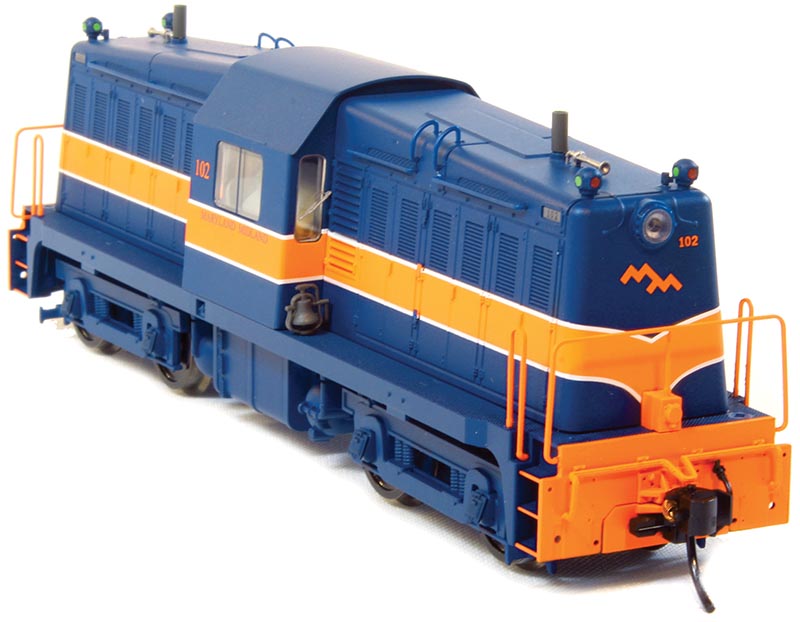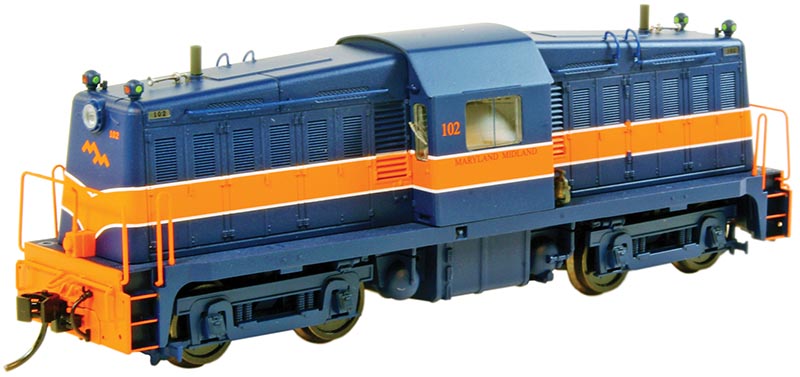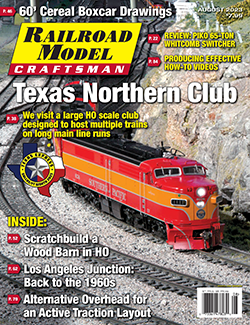 Review by George Riley/photos by the author
Review by George Riley/photos by the author
The American Civil War proved the importance of railroads for both tactical and strategic support of units in the field. Troops along with their heavy equipment could be quickly moved hundreds of miles to where they could be supported logistically with provisions and supplies. This fact was duly noted by the military leadership worldwide. At the time, military support consisted of a hodge-podge of available rolling stock and locomotives over pre-existing railways.
This would change with World War I when purpose-built locomotives and rolling stock were produced to meet the existing field conditions and logistics needs. This conflict was perfectly suited for railroad support since most of the combatants remained in static positions for a protracted length of time.
As the United States entered World War II, the nation threw its massive industrial might into producing all the materials needed for a modern war. This included four classes of steam engines and several types of then-new diesel-electric locomotives. Internal combustion had proven itself in the trenches of World War I, and the subsequent development of diesel engines made them easier to operate and proved highly reliable under battlefield conditions.

The underside of PIKO’s new 60-ton locomotive.
Whitcomb, then a subsidiary of Baldwin Locomotive Works, was contracted by the British to provide a light road switcher for use in North Africa and Palestine. The model designed for this contract was the 65DE14 series. This 65-ton center cab diesel-electric had two 325hp diesel prime movers powering Westinghouse traction motors and electrical equipment. With a 45 mph top speed, these locomotives were able to handle main line trains in addition to switching duty. More than 50 of this standard gauge, two-truck, four-axle model would be supplied to the British military.
As the Allied invasion of Europe became inevitable in the latter half of World War II, Whitcomb was asked to redesign their proven 65-ton locomotive for the tighter loading gauge of European railways. This resulted in lowering the cab roof, along with several other cosmetic upgrades while retaining their American-style headlights.
Like the earlier series, the new design featured two Buda 325hp diesel engines powering Westinghouse electrical equipment. Buda was a well-known manufacturer of gasoline and diesel truck engines. These were apparently chosen since they were readily available while most of the conventional manufactured engines were in short supply. The Buda engines did present some maintenance issues, particularly due to head failures; however, in the short term they filled a need and got the job done.
Between 1943 and 1944 Whitcomb’s Rochelle, Ill., plant would deliver 167 65-ton locomotives to the United States Army Transportation Corps (USATC) for overseas duty. While most of the early production units were delivered to England preceding the Normandy invasion, later production units would be delivered directly to France and Italy to support their war-ravaged railroad infrastructure. 65DE19s would pull the first trains to arrive in liberated Rome and Paris as well as providing yeoman service delivering much-needed supplies to the advancing Allied troops. Often operated in pairs, these Whitcombs provided essential service for the duration of the conflict.

This model is painted for the Maryland Midland, which owned one of the unique center cab locomotives.
With the conflict in Europe ending in the spring of 1945, most of these machines were repatriated to the U.S. for reconditioning to be sent to the Pacific Theatre since hostilities with Japan would not end until August of that year. At least 118 65-tonners would be stored at Hawkins Point, near Baltimore, Md., in preparation for this planned deployment.
While a few Whitcombs remained in Europe, 19 units would be purchased secondhand by the Dutch, others would be exported to Canada, Mexico, and Cuba with the remainder sold off as surplus to industrial and short line operators back in America. Among these was Maryland Midland Railroad, whose 102 is the inspiration for this model. The railroad’s sole 65-ton Whitcomb would remain in service into the early 1980s.
Out of the box, PIKO’s Americanized 65-ton Whitcomb closely matches the dimensions from the available drawings. Placement of the various details is consistent with photographs of Maryland Midland’s 102 and other prototypes. Unlike PIKO’s earlier release of the USATC model with European couplers, buffers and pilot, this Maryland Midland rendition features a American-style pilot with knuckle coupler, lift bar, and train line air hose. The hoods and chassis are both diecast, contributing a respectable amount of weight to the model. Factory-applied metal handrails, marker lights, bell, and horns make for a nicely detailed model. Even traction motor details have been molded in low relief into the bottom truck covers…




